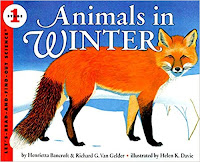Nature Connection January (#7)
January
Nature Connection Workbook:
Weather Journal:
https://www.timeanddate.com/weather/@4964024/historic
I noticed that everyday the sunrise got earlier and the sun set got later. This change is only minute by minute daily but that will slowly lead to the change in our time zone and seasons. This type of journal can be used to show evidence and explain the reason for our daily weather. On Tuesday 2/5/2019 the temperature was abnormally high for the winter season, which caused the snow and ice to melt. However, on Wednesday 2/6/2019 the temperature was back down to the thirties which is freezing temperature and caused everything that melted the day before to re-freeze and become a thick layer of ice.
Winter Animals of Maine
A moose has one of the thickest hides and most insulating hair coats of any land mammal. While they do completely shed their winter coat every spring, they immediately begin to grow a new hair coat. Their large bodies reduce heat loss due to a low surface area ratio. However, during times of deep snow, moose will generally look for a sheltered are with access to food for browsing.
Cottontail rabbits find shelter under brush piles, dense shrubs or buildings. They cannot dig, but will hide in cavities dug by other animals. Cottontails are more vulnerable to predators when there is snow on the ground because the gray-brown cottontail does not turn white, like their cousin, the snowshoe hare.
In the fall, before the ponds freeze, the beavers store food such as fresh branches in the water around their lodges. They spend the entire winter inside their lodges. When they are hungry, a beaver will swim out of the lodge to get their food that is stored under the ice.
Skunks do not hibernate but generally remain inactive during winter, surviving on their fat stores. However, they may leave the winter den for short periods during warm weather to collect extra food.
More information about hibernation and what animals do and don't hibernate.
Man-Made vs. Nature-Made
Man-Made:
- Buildings
- Cars
- Plow
- Cement Road
- Traffic Signs
- Telephone Pole
- Wires
- Fence
- Backpack
- Jacket
- Shoes
- Road Salt
- Trees
- Snow
- Ice
- Icicles
- Leaves
- Pine Cones
- Sun
- Clouds
- Breeze
- Neighbor's Dog
- Apple
- Birds Nest
- Dirt
Activities for children related to nature, weather, and animals:
- Keep a classroom Weather Journal. At the end of the month graph the information with the students and discuss what information they have gathered. Make a prediction for the next month or make comparisons month to month.
- Track the moon phases. Try to guess when the next full moon or new moon will be. Discuss the different moon names such as harvest moon, red moon, super moon, etc.
- Go for a walk out side. Ask students to make notes about what they see, mark if it is nature-made or man-made, living or dead.
- Research about the animals in your environment. What do they eat? Where do they live? What do they do in each season?























Such a great blog! Very thoughtful, with many useful resources. These would be fun take-home activities for children to do with families. 15/15
ReplyDelete